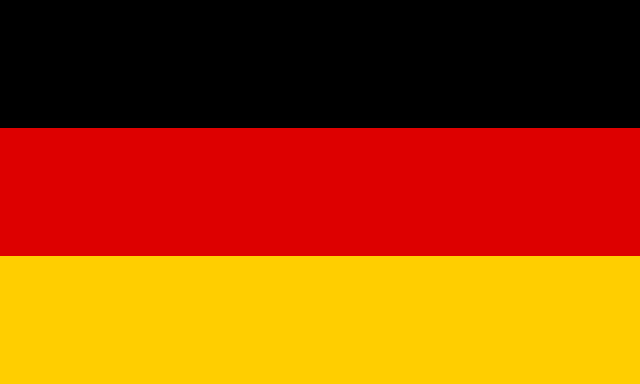SPIRIT OF BHUTAN
WHEN TO GO
March-June | Sept- Nov
IDEAL LENGTH
7 NIGHTS/ 8 Days
ACCOMODATION
3* hotels/ Farm Stay
price
usd $2,000
excluding flights
Bhutan’s unique culture and traditions are originated from Buddhism which is prevailed the religion in Bhutan. For the Bhutanese people, Buddhism is not just a religion, but a philosophical practice inherent and ingrained in their daily lives. The approach to development is based on the philosophy of Gross National Happiness—the development with values. The government advance with developing holistic and enabling amenities considering the sustainable avenues for the people enjoy happiness.
PLAN YOUR JOURNEY
This unforgettable journey showcases just a few of our favourite experience combinations in this iconic destination. It is merely an example from which you can use to start dreaming and creating your own adventure with one of our dedicated Travel Specialists.
Itinerary
Welcome to Bhutan and your first day in the magical Land of the Thunder Dragon! Upon arrival at Paro International Airport, on arrival, you will be greeted by one of our guides from Always Bhutan Travel. We start your journey by heading over to Thimphu city, the capital of Bhutan. Thimphu is the capital of Bhutan and one of the main centers for trade and commerce. Many Government as well as private offices are located in Thimphu due to its strategic location We start your journey through Thimphu valley by first visiting the National Memorial Chorten – a beautiful stupa built in memory of the third king of Bhutan located at the heart of the city. This chorten is blessed and contains many sacred and precious treasures and relics discovered by many great saints and tertons(treasure discoverer) in the Vajrayana sect of Buddhism. The stupa signifies positivity and accumulation of merits in ones life. Evening, leisure walk along Thimphu city and dinner at a popular Restaurant. You will receive an orientation of the overall trip program, also a meet and greet session with the entire team.
Today we visit the National Folk Heritage Museum, dedicated to connecting Bhutan to its past with exhibitions, demonstrations, and artifacts. Designed to resemble a rural home, this 19th-century building houses three stories of art, culture, and relics.
At The National Textile Museum, you will witness the art of weaving and learn about the significance of textile design. Bhutanese weaving is considered a living art form and traditional weaving methods are preserved by the Royal Government.
At Jungshi Handmade Paper Factory, you will witness the art of papermaking. Craftsmen demonstrate how Deh-sho paper is made using the bark of two local tree species. Buddhist monks use Deh-sho to write prayers and for woodblock printing.
Outside Thimphu is Simtokha Dzong, the oldest fortress in Bhutan. Legend says it was built to imprison a demon that was terrorizing the area. The first fortress of its kind, it features beautiful Buddhist paintings and carvings.
Thimphu Tashichho Dzong, a traditional fortress and Buddhist Monastery, is the largest in the city. Featuring distinctive Bhutanese architecture, using neither nails nor written plans, the structure serves as the current seat of the King of Bhutan.
Embark on a day’s excursion to Tango Buddhist College. Tango monastery is situated in solitary hill covered by forest and is one of the best places to study Buddhism. The monks take pride in being a part of this beautiful Dratsang and at present there are also seven reincarnation studying here.
The hike to Tango monastery takes about 1.5hrs round trip and the Chari goemba takes about 2.5hrs round trip. Picnic lunch will be arranged amidst the nature trail. After visiting the holy shrines, you can spend some time meditating in the temple and the surrounding campus. It is believed, meditation happens own at this serene site.
We continue our trip further east to Punakha today after breakfast. We are headed to Dochula Pass – The 108 chortens was built by the present Queen Mother of Bhutan Ashi Dorji Wangmo Wangchuck to commemorate Bhutan’s victory over Indian militants and to liberate the souls of the souls lost. After spending some leisure time at Dochula, we continue to Punakha valley which is approx. 1.5 hours driving downhill.
Our first stop in Punakha is to visit Punakha Dzong – Built in 1637, the dzong continues to be the winter home for the clergy, headed by the Chief Abbott, the Je Khenpo. It is a stunning example of Bhutanese architecture, sitting at the fork of two rivers, portraying the image of a medieval city from a distance. The dzong was destroyed by fire and glacial floods over the years but has been carefully restored and is, today, a fine example of Bhutanese craftsmanship.
Later check in to hotel and dinner at hotel.
Before we head toward Gangtey valley, we visit one of the most mysetreious temples in Bhutan. The Chhimi Lhakhang – A 20 minutes’ walk across terraced fields through the village of Sopsokha. Ngawang Chogyel built the temple in 15th century after the ’divine Madman’ Drukpa Kuenlay built a small chorten there. We continue driving towards Gangtey valley passing Wangdue phodrang district, one of the major towns and district capital of Western Bhutan. Located south of Punakha, Wangdue is the last town before central Bhutan. The district is famous for its fine bamboo work and its slate and stone carving.
Early morning, we pay visit to Gangtey Goenpa monastery to experience and meditation on the lawns of this special monastery whos history dates back to 7th century. The monastery is believed to posses sacred relics and religious texts from ancient masters that has been preserved at the monastery.
After a relaxed morning session, we than continue our journey towards Paro valley that can take upto 4 hours.
We then enjoy a scenic mountain bike ride led by your guide around Paro valley with a ride all the way upto Drukgyal dzong. It’s a fun and easy ride along the river.
We will take a two-hour hike to Taktsang Monastery, arguably one of the most photographed monasteries in Bhutan. Accessible only by foot, this sacred site was built precariously on the cliff’s edge, more than 10,000 feet above sea level. This is where Guru (Rinpoche) Padmasambhava, the father of Bhutan Buddhism, is said to have flown on the back of a tiger to meditate in a cave for three years. An exhilarating climb to the cafeteria is decorated with colorful prayer flags and provides breathtaking views of the Himalayas.
We end our tour with a visit to Kyichu Lhakhang, one of the oldest Buddhist temples in Bhutan. This is the second of two temples built in Bhutan by Tibetan King Songtsen Gambo in a single day to hold down the giant demoness who was preventing the spread of Buddhism
Today we will bid fond farewell to this beautiful Himalayan country. We hope by now you would have made some friends and also kept many photos and beautiful memories of Bhutan! And we look forward to seeing you again in this beautiful land of endless Enchantments! Tashi Delek!
| People | 1 | 2 | 3 | 4 |
|---|---|---|---|---|
| Cost Per Person | $2,000 | $3,580 | $5,580 | $7,160 |
- Private guided tour
- Visas for Bhutan
- Airport transfers
- Daily 3 meals (B/L/D) at designated restaurants or hotels
- Accommodation at 3 star hotel/ farmhouse
- A qualified & licensed English-speaking guide
- An experienced driver
- A tour vehicle
- Entry fees & road permits
- Government fee, royalty, taxes & surcharges
- Bottled water
- Full service & assistance before, during and after your Bhutan trip
-
-
- Flight into Bhutan via Drukair/Bhutan airlines (can be arranged with us)
- Meals at 4-5 stars restaurants
- Hotel stay outside of Bhutan
- Expenditure of personal nature
- Travel Insurance
- Tips for the guide and driver
- Alcoholic drink
-
In addition to offering independent, flexible tour options, we can also arrange a variety of “add on” options to provide a more in-depth experience of Bhutan. These include:
- Cooking lessons
- A farmhouse stay
- “Ara” (rice liquor) brewing lessons
- Monastery experience
- Dzongkha Calligraphy classes
- Evening dinner & culture show
Alternatively, you can awaken your senses with a range of wellbeing and spa retreats offering yoga, pilates, meditation, healing bodywork, hot stone baths and massage.
Read out custom travel tips for Bhutan to ensure that you are prepared for your journey.
Download important information about your destination(s), including passport and visa requirements; vaccinations; baggage restrictions; a packing list; and tipping guidelines.
Read out custom travel tips for Bhutan to ensure that you are prepared for your journey.
OTHER EXPERIENCES YOU MAY LIKE
Can’t find it? Don’t worry. Just because it’s not here, doesn’t mean we can’t do it.
Call us on +975 17771152 or tell us what you’re looking for here.
WE’LL MAKE IT HAPPEN.




